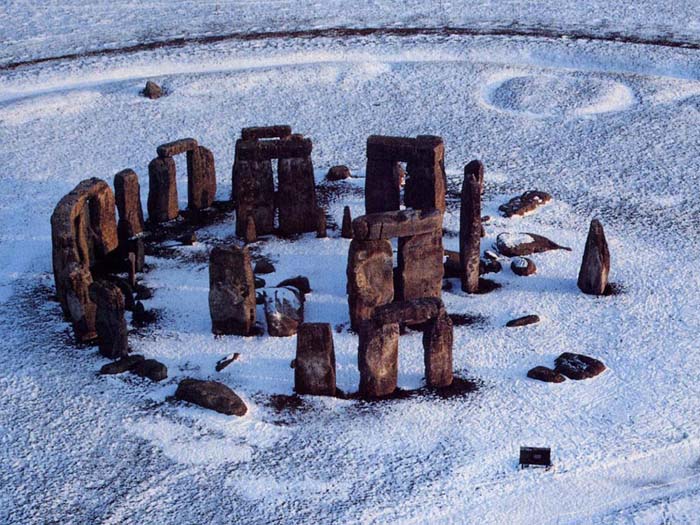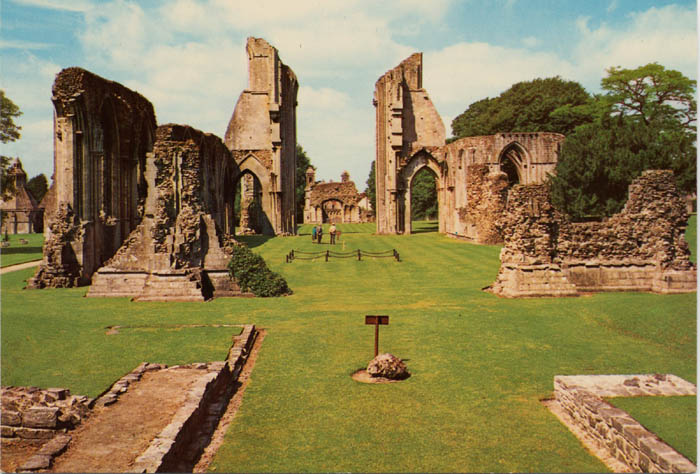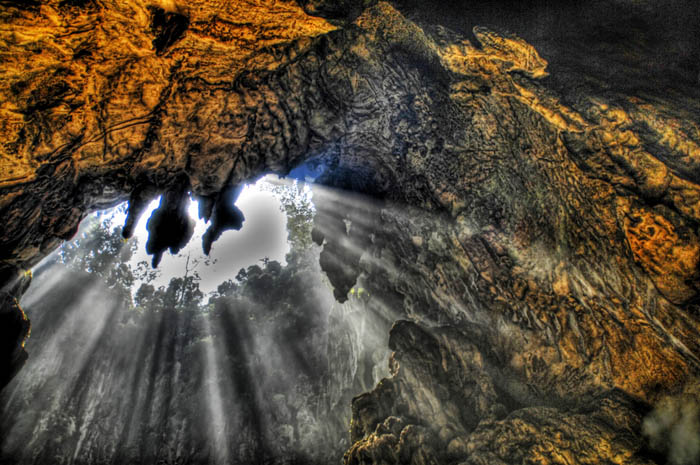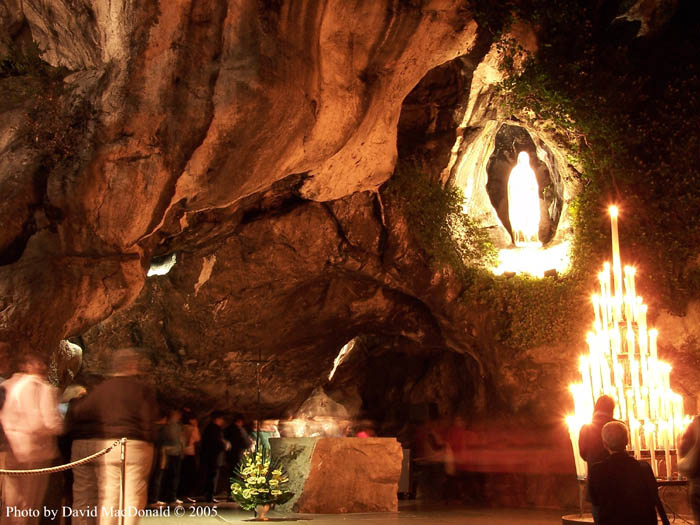|

Stonehenge is one of the
oldest and most
seemingly "astrological" of all historical mystery monuments.
...skies
above, shrines below
By
John Townley
I was
recently back in
contact with Dennis Price, a
marvelous combination of archaeologist, writer, investigator,
storyteller, and
scientific and spiritual explorer, whose forthcoming book next month is
all
about where Jesus likely spent those missing 18 years before coming
back to the
Middle East. Where might that have been and who might have led him
there? Clue: his cousin Joseph – you know, the one from
Arimathea.
Go find out the rest at Dennis’s site Eternal
Idol along
with
lots more about all kinds of research and extrapolation of classical
and
archaeological sources that are mind-openers. The specific
article
that specifically set my wheels to turning was about Stonehenge and its
“astrological”
or in general skyward implication. Definitely worth a read, especially
because
he recognizes the multiplicity of sky-pointing artifacts, stone and
wood
circles, sky temples, stellar rock inscriptions, you name it, from
earliest
times and the many different (and often totally misplaced) explanations
that
have been and still are being given for them. What were they actually
made for,
as opposed to what we surmise looking back in time with too little
evidence?
Astrologers claim it at least in part for our own, but we
aren’t
the only ones
who seem too sure of just what these mysterious monuments of ancient
times were
all about.
Price’s
comment “The rituals of foundation are
not necessarily the rituals of use” is at the heart of almost
anything that
should be said on Stonehenge and many other organized lithic (or wood,
bone, etc.)
remains marking a distinct period, whose historical dates vary by
location
around the world, when the likes of Obelix
and friends were tossing menhirs
about with relative abandon and everybody knew exactly what they were
up to, as
much as we do in downloading an .mp3 today. But, each investigation
since has
superimposed what we decide it must be in such modern (or our-period)
anthropological terms as to often be ludicrous and irrelevant, not to
mention
misleading. Anyone who has read Robert Nathan’s The
Weans or
David
Macaulay’s Motel
of the Mysteries
has a humorous idea of what I’m
saying. Depending upon
your personal or scholarly prejudice, anything you find and
don’t
understand has to be
either something ritual, part of a temple, early science
(that’s
the calendrical
view), or remnants of Atlantis or space aliens. What’s this?
Hmm…don’t
know…must have been a ritual object. Will write a paper on
it --
publish or
perish. Astrology only occasionally gets thrown in when somebody (like
the Mayans) uses something they’re
doing to make specific predictions, which is our own modern fallacy
about the
definition of astrology.
In
fact, I
believe astrology at its core
across the ages has simply been about noticing the obvious integration
of
rhythms and cycles, long and short, which actually physically originate
with and have persisted longest between the planets, but which
have
filtered down in loose but endlessly reinforced synchrony to every
subrhythm
known on earth, from the macrocosm, through the mesocosm, to the
microcosm.
And, being ancestrally part of them and depending on them, human and
other
biological organisms have become particularly aware of how they work,
though we
tend to pick which set we’ll recognize or reject/forget
depending
upon our
current state of evolution and which work for us best at the time. But
inside,
like knowing where magnetic north is (which a surpisingly large number
of
humans can do, myself included), we just know. You can see a
not-quite-succinct
and somewhat anecdotal exposition on that at “The
Moon On
Deck” which
pretty much sums up my approach to a physical basis to
astrology, a critical bottom line which most astrologers today have
abandoned for
shallower waters.
What
I
liked about Price’s approach to Stonehenge is that it admits
to
the site being simply a connection place – not necessarily to
a
specific god
(though, as a calendar, Apollo would be the Greek label), or to space
aliens,
or to have power over crops – but simply to recognize an
enduring
relationship
of what is. Is it aligned to the stars and planets? Of course, what
else would
it be patterned on? That’s what’s out there and
forms and
informs what is here. Why always,
eventually, stone? Because that has the greatest temporal dimension,
not just
big in space, but in time. See my little piece mentioned above for more
on
that, especially 3D time and dimensional depth and breadth (still
working on
parts of that), just as David Deutch and other cosmologists are finally
getting
back to the single-multiverse Greek theme.
 The site of Glastonbury
Abbey and
its nearby Tor, with a surrounding
"Zodiac",
sacred to many religions for millenia. The site of Glastonbury
Abbey and
its nearby Tor, with a surrounding
"Zodiac",
sacred to many religions for millenia.
And,
when
things are properly lined up so they
feel right (are relatively in sync, so to speak), they actually gain
inertial
presence, for whatever use they get put to. Stonehenge is a natural
one, so is
Glastonbury. All you have to do is put a sign up promoting your current
social
or religious scheme (pagan, Christian, rock festival, what have you)
and tap
into the enduring energy. Lots has been said on that, including my own
take on Paul Kammerer see
the “sacred
places” subsection in
that article. So-called “sacred places”
seem to have an underlying (or perhaps lost in prehistory) magnetism
about them
that can really spin you around, while others quite similar have only
gathered
it within historical times. Glastonbury and Stonehenge have had it for
a long
time, Lourdes only since the apparition that started its fame (1858),
others are
perhaps more intermediate on the scale like the Batu Caves in Malaysia
(which I
was drawn to climb up to as a 12-year-old, much to the annoyance of the
surrounding adults), among the ones I've personally
experienced. The
longer people have been aligning themselves with it, the stronger it
seems,
right down to the level of the ridiculous, on a much shorter timescale,
which I
recall watching as it happened in the 1990s:
A
few years ago a concrete
traffic bollard
was dumped by a truck driver in a remote part
of
Golden Gate Park, San Francisco. In 1992 it was discovered by local
mystic,
Baba Kali Dass who declared it to be a Shiva
lingam. If
he’d been
Druidically inclined, he might have labeled it a menhir. By 1993, the
bollard
was attracting thousands of New-Age, Hindu and Buddhist pilgrims, and
claims of
miraculous cures were circulating. A stone circle was constructed
around the
bollard, and in October 1993, the devotees asked for permission to
build a
permanent shrine. Park officials threatened to demolish the bollard,
and Kali
Dass's group filed a federal lawsuit, invoking the First Amendment's
protection
of religious freedom. I remember it from the media coverage at the time
– in
fact a local pop radio station interceded on behalf of the followers to
help
finance the affair and mediate with the city. Of course, it was stone,
and once
it got going, it snowballed. Eventually, a nervous parks department
relandscaped it out of existence, and it never reached the level of
more
ancient local shrines that have had equally, but different, humble
beginnings. The tale of its fall appeared in
the Washington Post.

The rising walls
of the Batu Caves
Hindu shrine in Malaysia have absorbed the smoke of
burnt
offerings for centuries.
Of
course,
most people have an innate sense of
these places, even if they aren’t set up to expect it or
understand it. When I
first set foot in Glastonbury
at
age eight, I felt myself being pulled into the ground, had no idea what
was
going on, while watching my mom break into unexplained tears. I have
since on
several occasions brought unsuspecting friends there to watch them
break down
as they step onto the grounds. I even got taken by the lee last time I
was
there, thinking I had become immune, as I happened on a vacant spot in
the
usually crowded too-tiny car park at the Chalice Well. I was in a rush,
glad to
have got the rare convenience, walked through the gate, and promptly
dissolved
into uncontrollable sobbing, like I’d been struck from within
or
above. Not
sorrow or joy, just overcome, more eternal amazement, I guess. Strong
stuff,
that…
I
am
rather with the opinion of Paul Kammerer (but maybe that’s
just
because we share a birthday) that it’s all very physical,
natural
law, of which
we are a comfortable part if we let ourselves be. But, in the process
of trying
to explain something old in new terms, we completely lose touch with
the
broader reality, seeing only our tree and missing the forest. I think
the likes
of Stonehenge were, in fact, places set up to get in touch with a
larger
reality, to simply recognize it, tune in. Call it a temple, call it an
observatory, call it a interplanetary communications station, pick your
period and
your own vocabulary, each of which limits it. My feeling is not as
specific as
having “come here from there” like a transplant,
but more
like having arisen
here from out of there. I sympathize as much with the muppet
Gonzo’s song “I’m
Going To Go Back
There Someday” as
with Obelix (well, maybe even more
with Getafix, he being an
astrologer),
and since cycles and rhythms are all, in temporal dynamics, music, you
usually
find music (or evidence of it) at all these places. Of course they were
always
playing tunes, as that’s part of the very structure itself,
just
scaled/fractalized on a different frequency but a proportionately
similar
template.

The Lourdes
grotto is a relative
newbie (since 1858), which has been acquiring greater depth as the
years pass.
Thus
one should perhaps espouse an inclusive approach to
Stonehenge (and other similar sites) which admits a multi-layered
purpose and
history for the places, at the bottom of which is a much broader view
of its
constructors and users than most historians or archaeologists are
willing or
able to propound. Was it astrological? Absolutely, though not what we
have
marginalized as astrology today, only what I would hope once and future
astrology
might be. We would do well to expand our understanding backward to the
breadth this phenomenon embraces while still keeping
the
rigor and
incisiveness of observation and deduction we have developed
since
it was
abandoned. It’s all of a piece, just one dynamic,
self-supporting
structure
that we live in, within us and without us.
Not
a
newsletter subscriber already? Subscribe
Free Here!
--
Breaking news from
around the globe, plus articles, reviews, it's all happening there,
changes daily...
|

